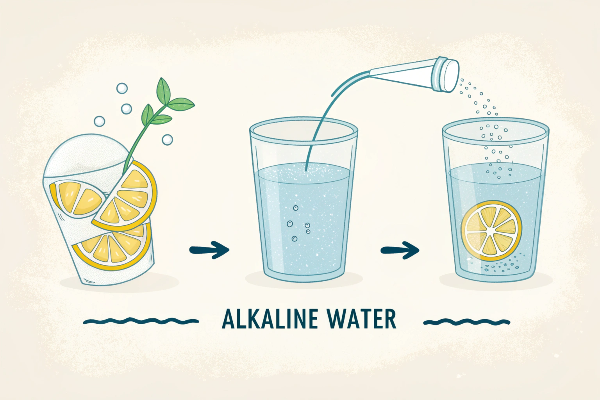In our quest for clean drinking water, one of the crucial steps we often overlook is sedimentation. It’s a process as ancient as nature itself but plays a pivotal role in modern water treatment technologies. So, what exactly is sedimentation in water treatment, and why should you care about it?
Sedimentation is the natural or induced process of removing suspended solids from water by gravity. Essentially, it’s about letting gravity do the heavy lifting, quite literally. Particles that are heavier than water sink to the bottom of a sedimentation tank, allowing the clearer water on top to be collected and further treated or distributed for use.
Imagine a bustling, muddy river calming into a serene, clear stream. That transformation is sedimentation at work, a silent yet powerful force in purifying our water supplies. It’s not just about clarity; it’s about making water safe and reducing the load on subsequent treatment processes.

Why is Sedimentation Important in Water Treatment?
Sedimentation is the unsung hero in the multi-barrier approach to water treatment. It acts as a crucial preliminary step that significantly reduces the turbidity of water, making it less taxing on filtration systems that follow. By removing a substantial amount of suspended solids, sedimentation prevents these particles from clogging filters, thus extending their lifespan and efficiency.
Moreover, sedimentation helps in the removal of pathogens and pollutants that cling to particles. When these particles settle, they take down with them a myriad of unwanted guests, reducing the risk of waterborne diseases and the need for chemical disinfectants. It’s a simple yet effective way to enhance the overall safety and quality of our water.

Types of Sedimentation Tanks Used in Water Treatment
The world of sedimentation is diverse, with various tank designs tailored to different needs and efficiencies. Let’s dive into the most common types:
- Rectangular Tanks: These are the traditional workhorses of sedimentation, where water flows slowly over a long path, allowing solids to settle at the bottom. They are easy to construct and maintain, making them a popular choice for many water treatment facilities.
- Circular Tanks: With a central inlet and a peripheral outlet, circular tanks promote a uniform flow pattern that enhances particle settling. Their compact design is ideal for facilities with limited space.
- Tube Settlers and Plate Settlers: These systems use inclined plates or tubes to increase the effective settling area, boosting the sedimentation rate. They are often added to existing tanks to enhance performance without the need for additional footprint.
Each type has its own set of advantages and applications, allowing water treatment facilities to choose the best fit for their specific sedimentation needs.

The Sedimentation Process: How Does it Work?
The sedimentation process is a delicate dance of physics and chemistry. Water entering a sedimentation tank is given time to calm and still, encouraging the suspended particles to succumb to gravity. The rate at which these particles settle depends on their size, density, and the water’s viscosity and temperature.
But it’s not just about waiting for gravity to do its job. Coagulation and flocculation often precede sedimentation, where chemicals are added to the water to bind particles together into larger, heavier groups called flocs. These flocs settle more quickly than individual particles, making the sedimentation process more efficient.
Controlled conditions within the tank, such as flow rate and detention time, are optimized to maximize settling. The settled sludge at the bottom is periodically removed for further processing, while the clarified water moves on to filtration and disinfection stages.
Challenges and Solutions in Sedimentation
Despite its simplicity, sedimentation is not without its challenges. High flow rates, fluctuating water qualities, and excessive sludge buildup can hinder the process. To combat these issues, water treatment facilities employ various strategies:
- Regular Maintenance: Cleaning and removing sludge from tanks ensure they operate at peak efficiency.
- Flow Regulation: Adjusting flow rates to optimal levels prevents disturbance of settled particles and ensures uniform settling.
- Use of Coagulants and Flocculants: Improving particle aggregation can enhance settling rates and overall sedimentation effectiveness.

By addressing these challenges, facilities can maintain a consistent and reliable sedimentation process as part of their water treatment regimen.
The Future of Sedimentation in Water Treatment
As we advance into the future, the principles of sedimentation remain unchanged, but the technologies and methodologies surrounding it continue to evolve. Innovations in tank design, coagulant formulations, and process automation are making sedimentation more efficient, cost-effective, and adaptable to changing water treatment needs.

Moreover, the integration of smart sensors and data analytics offers new ways to optimize sedimentation processes in real-time, adjusting to varying water qualities and demand. This not only improves water quality but also reduces energy and chemical usage, contributing to more sustainable water treatment practices.
Conclusion
Sedimentation is a cornerstone of modern water treatment, a testament to the power of simplicity and the genius of mimicking natural processes. By understanding its importance, challenges, and future directions, we can appreciate the role sedimentation plays in delivering safe, clean water to our taps. As we continue to refine and innovate within this essential process, we ensure that sedimentation remains a reliable foundation for water treatment for generations to come.
As we delve into the complexities of water treatment, let’s not forget the simplicity and effectiveness of sedimentation. It’s a reminder that sometimes, the best solutions are those that work in harmony with the laws of nature.





